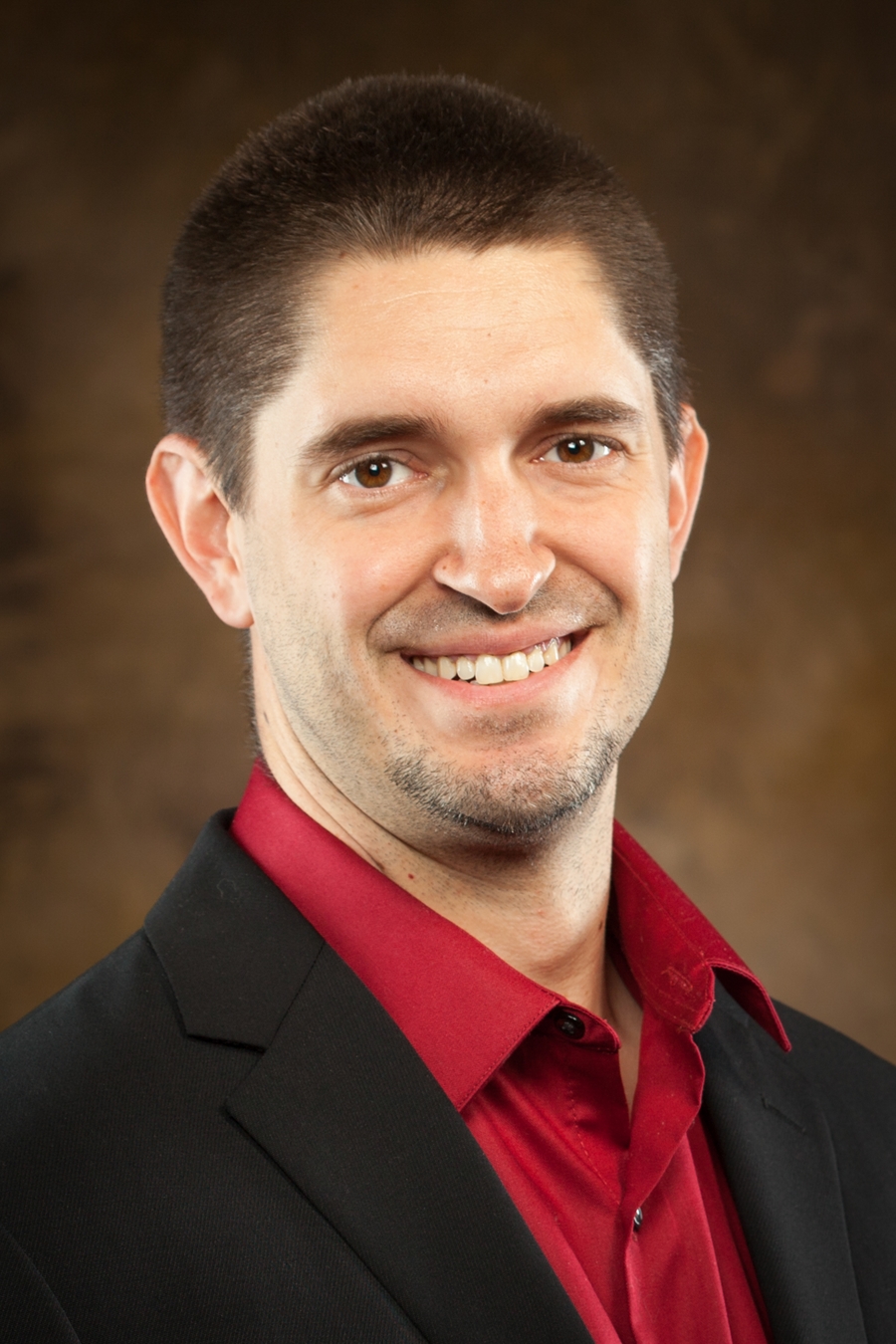Research Could Lead to Treatments for Muscle Wasting in Cancer Patients
FAYETTEVILLE, Ark. – Researchers have found that evidence of cachexia, or muscle loss in cancer patients that can be life-threatening, emerges early in tumor development, a discovery that broadens understanding of the complicated effects of cancer on the body and advances their study of the condition to find ways to treat or prevent it.
Cachexia is estimated to cause between 20 and 40 percent of cancer-related deaths, according to the researchers. They studied the development of cachexia in mice, and found that certain conditions associated with muscle wasting occur as early as one week after tumor implantation, weeks before muscle wasting begins. They published their results in the Journal of Cachexia, Sarcopenia and Muscle.
Nic Greene, assistant professor of exercise science in the College of Education and Health Professions at the University of Arkansas, worked with a team of graduate students including Jacob Brown, Megan Rosa-Caldwell and David Lee, as well as Tyrone Washington, associate professor of health, human performance and recreation, and collaborators including Jim Carson from the University of Tennessee Health Center and Michael Wiggs from the University of Texas at Tyler.
In order to learn more about cachexia, the researchers looked at mitochondrial quality in muscle cells.
“Skeletal muscle mass is regulated by a balance between making protein and degrading protein,” Greene. “If you degrade more than you make, you are going to waste. We believe healthy mitochondria are key to prevent the wasting process.”
Mitochondria are often referred to as the “powerhouse of the cell,” because they produce adenosine triphosphate, or ATP, which provides energy for all living cells. These organelles also produce a waste product called reactive oxygen species, or ROS, commonly known as “free radicals.” Impaired mitochondria must work harder to produce ATP, which leads to increased production of free radicals that can degrade the cell health.
The researchers observed both impaired mitochondrial quality and alterations in the cellular functions that are necessary to maintain muscle mass in the mice as early as one week after tumor implantation. These changes were observed several weeks before any signs of muscle wasting appeared. These results are the first step in developing future therapies to address the problem of muscle wasting.
“Cancer cachexia is often not treated before stage IV of cancer is reached,” the researchers write. “These data suggest targeting of muscle mitochondrial quality may be vital for the treatment and prevention of cancer cachexia either pharmacologically or through exercise.”
About the College of Education and Health Professions: The College of Education and Health Professions offers advanced academic degrees as well as professional development opportunities and learning communities in service to the education and health systems of Arkansas and beyond. The college provides the education and experiences for a range of professional roles, ranging from community mental health counselors to school teachers and leaders. Programs in adult and higher education, along with educational technology and sport management, and human resource and workforce development, offer a broad range of options. In addition to education-related opportunities, the college prepares nurses, speech-language pathologists, health educators and administrators, recreation professionals, rehabilitation counselors and human performance researchers.
About the University of Arkansas: The University of Arkansas provides an internationally competitive education for undergraduate and graduate students in more than 200 academic programs. The university contributes new knowledge, economic development, basic and applied research, and creative activity while also providing service to academic and professional disciplines. The Carnegie Foundation classifies the University of Arkansas among only 2.7 percent of universities in America that have the highest level of research activity. U.S. News & World Report ranks the University of Arkansas among its top American public research universities. Founded in 1871, the University of Arkansas comprises 10 colleges and schools and maintains a low student-to-faculty ratio that promotes personal attention and close mentoring.
Topics
Contacts
Nicholas Greene, Assistant Professor of Exercise Science
College of Education and Health Professions
479-575-6638,
npgreene@uark.edu
Camilla Shumaker, director of science and research communications
University Relations
479-575-7422,
camillas@uark.edu
Headlines
Four Students Named Goldwater Scholars; Two Earn Udall Honorable Mentions
Four U of A students have received the prestigious Goldwater Scholarship, an award for top students in mathematics, science, and engineering.
Cross-Campus Collaboration Culminates in New Outdoor Geological Installation
Grand opening event to celebrate the new GeoLab installation at the U of A’s Gearhart Hall courtyard is set for May 3. The installation will be open to the public year-round.
First Students to Use Online Degree to Hone Nursing Leadership, Elevate Patient Care
Hanna Baxendale and Wendi Kimbrell will begin coursework in the Doctor of Nursing Practice-Executive Master of Business Administration program offered by the Eleanor Mann School of Nursing and Walton College.
Join the Office for Sustainability on a Final Cruise to Campus
Cruise to Campus Wednesdays have fostered a gathering space for individuals interested in biking to campus. Drop by the Old Main Lawn from 7:30-10 a.m. Wednesday for coffee, something to eat and conversation.
Fay Jones School Student Ambassador Program Gives Voice to Design Students
The student ambassador program at the Fay Jones School of Architecture and Design is built to connect top design students with their school, its alumni, its future students and others inside and outside the school.





